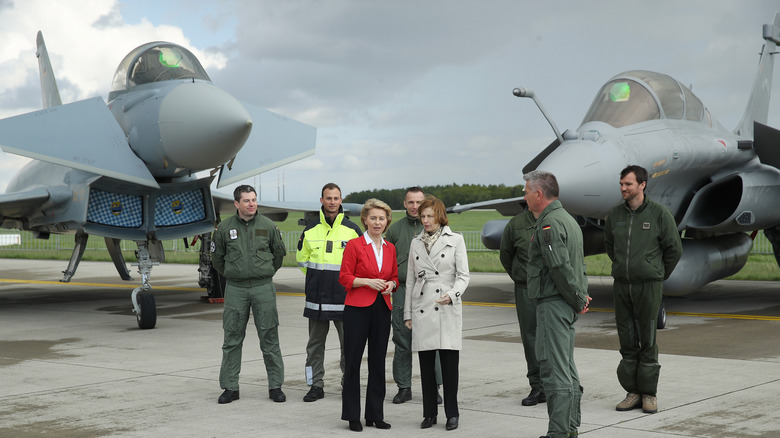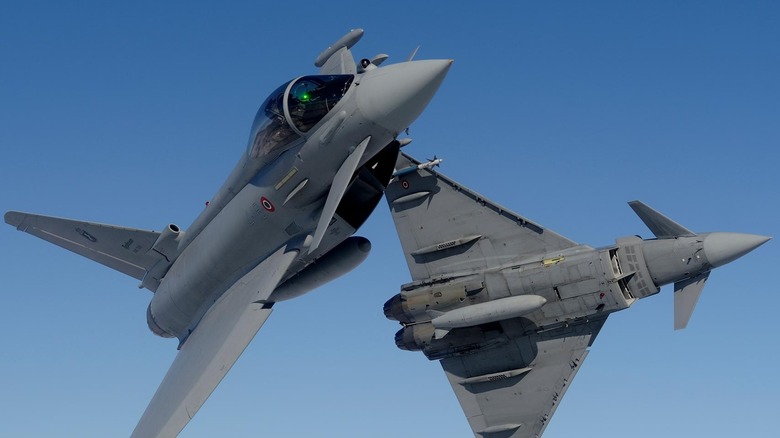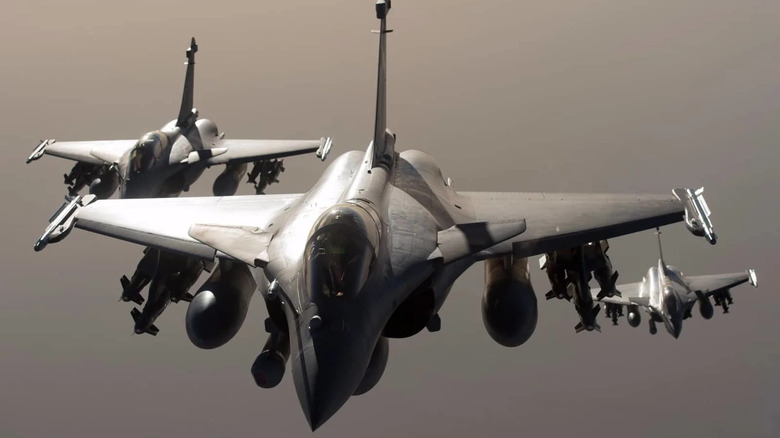Eurofighter Typhoon Vs. Dassault Rafale: How Do These European Fighter Jets Compare?
Two of Europe's finest 4.5 generation jets — the Eurofighter Typhoon and Dassault Rafale — are regularly pitted against each other. Their twin-engine, delta-wing-canard designs make them look quite similar, and they share performance overlap. They're also among the most widely used fighter jets today. But look a little closer, and you can tell each aircraft reflects a slightly different strategic mindset from its makers.
The Eurofighter Typhoon is more about speed, rapid response, and dominating the skies. Built by a four-nation team — the UK, Germany, Italy, and Spain — it shines brighter in high-agility dogfights and airspace control. The Rafale, meanwhile, gives up a bit of that in favor of flexibility. It's not quite as fast or high-flying, but it has better range, a beefier payload, and a carrier-ready variant (Rafale M) that's the only one in Europe capable of operating from aircraft carriers. The Typhoon is the sharper sword, but the Rafale is arguably the more useful Swiss Army knife.
On paper, it's a tight match with different priorities
That design philosophy becomes clearer when you zoom in on the numbers. The Typhoon's dual EJ200 engines push 90kN of thrust each, comfortably outpacing the Rafale's more modest Snecma M88-4e duo that produce 75kN each. That extra muscle means the Typhoon can recover energy faster in a fight, which is a big deal in close dogfights. At least one RAF pilot has even gone on record saying he beat a Rafale in a training engagement, crediting the Typhoon's superior engine performance.
When it comes to range, the Rafale takes the lead with 2,300 miles, comfortably outdistancing the Eurofighter's 1,800. In terms of top speed, though, they're evenly matched at Mach 1.8 in standard configurations. The Typhoon does gain a slight edge in altitude, topping out at 55,000 feet, compared to the Rafale's 50,000. But, the Rafale counters with payload capacity, carrying up to 21,000 lbs externally, which is noticeably more than the Typhoon's 16,500.
Weapons-wise, they're both packing serious firepower. The Typhoon carries AMRAAM, Storm Shadow, Brimstone, and ASRAAM missiles, plus a 27mm Mauser cannon. The Rafale matches that with MICA, Scalp, Exocet, and Hammer, plus a 30mm NEXTER gun. They also carry the Meteor long-range air-to-air missile, which has a range of 125 miles and a "no escape zone" that's among the largest in existence.
It's not just about flying — it's about selling
You can tell by now there are differences between the two, but they aren't anything that clearly tips the scales for most buyers. The main reason behind this is that they actually started out as the same project back in '80s. But France decided to go solo in 1985, and that split gave us two jets with shared roots but different attitudes. 680 Typhoons were ordered as of 2024. Spain and Italy have continued to replace older models with fresh Typhoons. Rafale sales, on the other hand, have surged to 495 total so far. It's seen export success recently, with India, Egypt, Indonesia, and the UAE all signing on.
But here's the thing — performance-wise, these jets are close enough that it's tough to call one clearly superior. They probably won't ever go head-to-head in combat anyway, since their buyers are pretty much on the same side politically. So when judging which one is more successful, you're better off looking at order books and costs, which is what most countries seem to care about these days.
On that front, Rafale has the edge. It's easier to maintain, cheaper to operate, and costs around $245 million per export unit with weapons, training, and parts included. The Eurofighter is closer to $321 million per plane in similar packages. That number has raised eyebrows, especially in Kuwait, where critics argue it doesn't offer enough over newer jets like the F-35, which also costs less.


